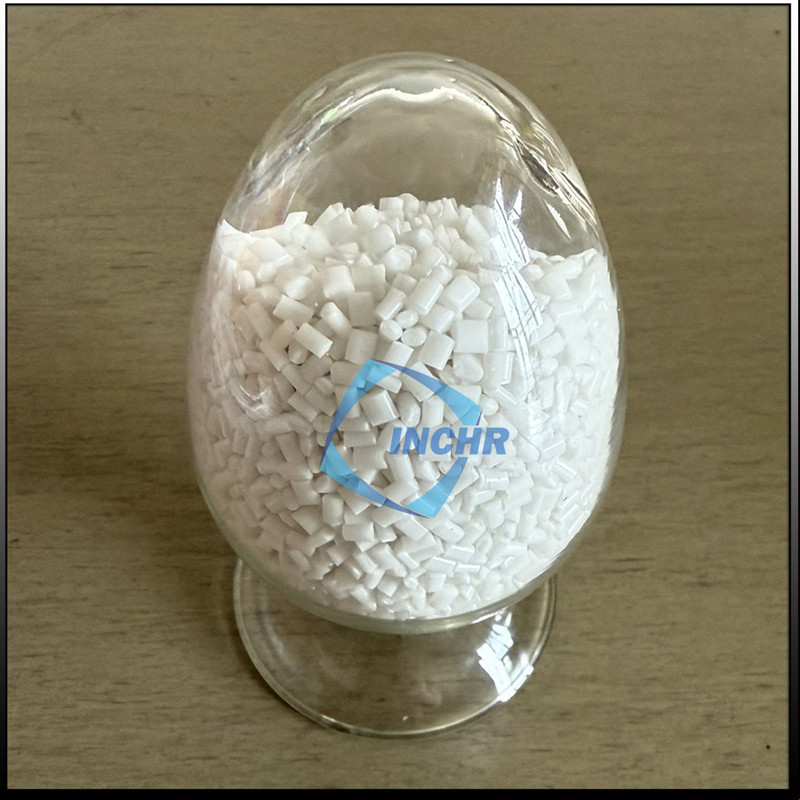Introduction to Anti Block Masterbatch | Product Catalog
Anti block masterbatch is a specialized additive used in plastic film manufacturing to prevent layers from sticking together during production, storage, or transportation. By incorporating fine mineral or organic particles, it creates microscopic surface roughness, ensuring consistent film separation without compromising optical clarity or mechanical strength. This additive is indispensable for industries requiring high-performance films, such as food packaging, agricultural covers, and medical supplies.

How Anti Block Masterbatch Works
The science behind anti-blocking technology revolves around three core mechanisms:
Surface Modification: Particles (e.g., silica, talc) create controlled micro-textures on film surfaces.
Friction Reduction: Lowers the coefficient of friction (COF) to improve machinability.
Barrier Formation: Prevents molecular adhesion between polymer layers.
Key Metrics for Performance Evaluation:
Blocking Force (ASTM D3354): Measures adhesion resistance (ideal: <100 g/cm²).
Haze Value (ASTM D1003): Maintains optical clarity (target: <5%).
COF (ASTM D1894): Balances slip and stackability (static COF: 0.4–0.6; kinetic COF: 0.2–0.4).
Top 5 Benefits of Anti Block Masterbatch
Reduced Material Waste
Prevents film tearing during high-speed processing, cutting waste by up to 20%.Enhanced Production Efficiency
Enables faster line speeds and fewer downtime incidents.Improved Product Quality
Maintains film transparency and surface uniformity.Cost Savings
Lowers energy consumption and reduces need for secondary additives.Sustainability Compliance
Supports recyclable and biodegradable film formulations.
Selecting the Right Anti Block Masterbatch
Consider these factors to optimize performance:
1. Polymer Compatibility
Match the masterbatch to base resins (e.g., LDPE, LLDPE, PP, PLA).
Ensure thermal stability within processing temperatures (160–260°C).
2. Particle Characteristics
Size: 2–10 µm for balanced anti-blocking and clarity.
Shape: Spherical silica minimizes haze vs. irregular talc.
3. Regulatory Compliance
Food-contact grades require FDA, EU 10/2011, or GB 9685 certification.
Bio-based options should meet TÜV OK Compost standards.
4. Application-Specific Needs
Ultra-Thin Films (<15 µm): Nano-silica blends (1–3% loading).
Outdoor Films: UV-stabilized additives for weather resistance.
Innovative Applications Across Industries
1. Smart Packaging Films
Anti-block agents enable high-clarity films for QR code and NFC tag integration.
Example: A European brand reduced packaging defects by 35% using nano-silica masterbatches.
2. Agricultural Films
Prevents greenhouse film blocking while maintaining light diffusion.
Case Study: A Japanese manufacturer extended film lifespan by 2 years using hybrid anti-block/anti-fog additives.
3. Medical Films
Ensures sterile barrier integrity in IV bags and blister packs.
Compliance: Must pass ISO 10993-5 cytotoxicity tests.
Sustainable Innovations in Anti Block Technology
The industry is shifting toward eco-friendly solutions:
Bio-Based Additives
Rice husk silica and lignin particles reduce reliance on mined minerals.
Recyclable Formulations
PCR-compatible masterbatches maintain performance in 30%+ recycled content films.
Low-Migration Grades
Minimize additive leaching to meet EU’s PPWR and U.S. EPA guidelines.
Common Mistakes to Avoid
Overloading Additives
Excess particles (>5%) increase haze and brittleness.Ignoring Moisture Control
Store masterbatches in airtight containers (<50% RH).Using Generic Grades
High-speed CPP films require finer particles than cast films.
Future Trends Shaping the Industry
AI-Driven Dispersion Systems
Machine learning optimizes particle distribution in real time.Multi-Functional Additives
Combine anti-blocking with anti-static, UV protection, or oxygen barrier properties.Circular Economy Integration
Masterbatches compatible with chemical recycling processes.
FAQs
Q: Can anti block masterbatch replace slip agents?
A: Partially—hybrid grades reduce COF, but specialized slip additives are needed for very low friction (<0.2).
Q: How does temperature affect performance?
A: High temperatures (>200°C) may cause particle migration. Use heat-stable grades for extrusion.
Q: What’s the shelf life of anti block masterbatch?
A: 12–18 months when stored in cool, dry conditions.
Conclusion
Anti block masterbatch remains a cornerstone of efficient and sustainable film production. By selecting the right formulation and staying ahead of regulatory and technological trends, manufacturers can enhance product performance while meeting environmental goals. For tailored solutions, consult suppliers offering technical support and custom compounding services.




